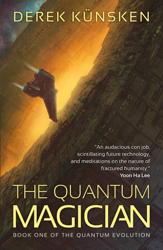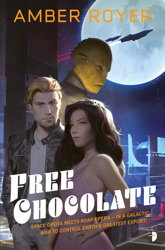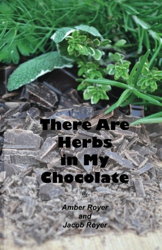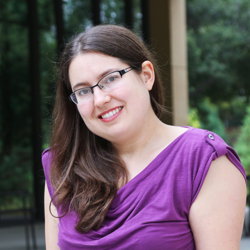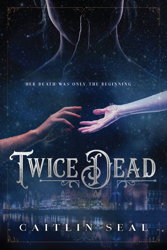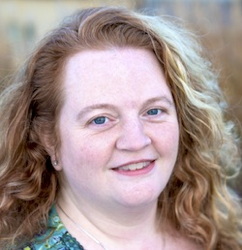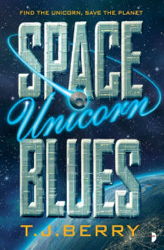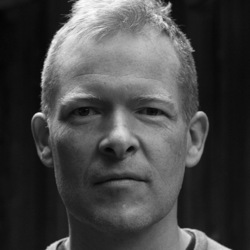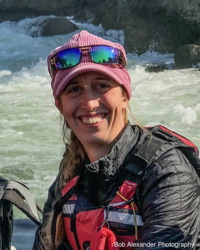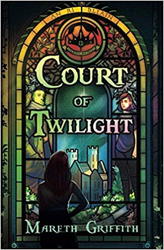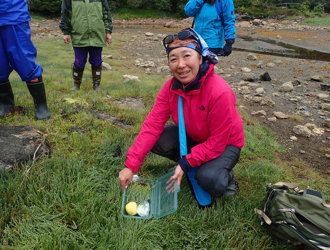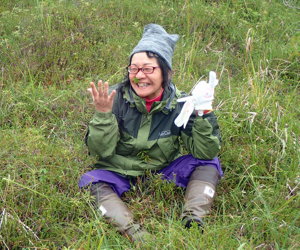
In the last twelve months, I’ve traveled to China twice to participate in SF workshops organized by the Future Affairs Administration. Getting to or from China is a stressful and exhausting affair (at least if one is flying coach and traveling from Philadelphia), but each time being there was a magnificent, experiences that I will always treasure. I met wonderful people, ate (and ate and ate) phenomenal meals, and witnessed indescribable sights. I feel incredibly privileged to have been there, and not just once, but twice.
In that same span of time, this week’s EATING AUTHORS guest, Derek Künsken, has visited China five times, as recently as last month when he was invited to speak at the World Conference on Science Literacy. I’m pretty certain he’d gone there at least twice in the year prior as well. In fact, now that I think about it, I’ve spent more time together with Derek in China than at conventions in the U.S.
He is Canadian, but his work has taken him all over. Much more colorfully than the usual odd jobs that writers land in, Derek’s gone from molecular biology, to working with street children in Latin America, to a career in refugee issues. And fortunately for us, he brings this fascinating blend of experience to his fiction.
Up to now, most readers have only known him for his short fiction, but he’s graduated to novels. Derek’s first book, The Quantum Magician, was originally serialized in the Chinese magazine SFWorld back in the autumn of 2017. That was great if you read Mandarin. The rest of us have had to wait for the novel’s English release, which happens tomorrow. I ordered mine weeks ago.

LMS: Welcome, Derek. World traveler that I know you to be, what meal stands out for you?
DK: Perhaps the most memorable was a plato de carne I got after dark one night in a darker part of downtown Bogota. I’d been working at the Canadian Embassy at the time, but some evenings, I was volunteering with an NGO that worked to try to get minors in the sex worker industry off the streets and into safety. I would do these evening patrols with my friend Patricia and our job was to make contact with the teen sex workers we found on the streets, and try to persuade them to come to a center where they could sleep, get food, clothing, medical attention and social workers.
Now, a kid you just met is going to take time to trust, especially if they’ve recently taken drugs. Patricia and I were walking in the center of Bogota after dark and on side street I spotted three boys of maybe 13 or 14, a little high from glue. We started talking to them, but after a bit they were looking like they were going to leave, so Patricia said “Hey, you guys hungry?”
Obviously they were, so we went to a little restaurant under fluorescent lights with plastic booths and linoleum tables and a kitchen at the back. We fit into the booth and kept on talking and as I looked at the laminated menu, I was astonished at the prices. Like 2,700 pesos for beef, rice, plantain and probably some vegetables! I liked the pictures of the food as much as the boys did. After the three of them ordered, I ordered myself the plato de carne, which got me a funny look from Patricia.
“You really want to eat here?” she said. We’d been partners on this evening shift for about six months. She was Colombian and I Canadian and I’d already stopped to buy meat on sticks and other things I found on the street, so she was maybe used to my eating, but maybe this was crossing a line?
“What?” I said. “It’s beef. Look at the picture.”
“For 2,700 pesos, it can’t be beef. Maybe horse.”
I have never paid too much attention to nay-sayers when it comes to being carnivorous, except if the food is super-spicy, which Colombian food is not. And also, I hadn’t eaten in like three hours. So when my plato de carne came on its styrofoam plate I was delighted. It was a huge hunk of dark, juicy meat covering the rice and plantain and other things. My friend Patricia dubiously watched me eat. Her reasoning might have been that most of the street children we worked with were underfed and already had parasites that needed treating. Those things weren’t true of me.
The meat was good enough. I didn’t recognize the cut, but the consistency seemed okay. It was a bit greasy. They fried it instead of grilling. After a while, I switched to the rice and didn’t finish all my overly juicy beef. The boys finished theirs and when they saw I wasn’t going to, they eagerly took my leftovers. And, in the end, the hour we spent with them talking got us enough cred that we all stuffed ourselves into Patricia’s little red Renault Quatro and dropped the boys off at the shelter.
When I got back home to my apartment, I learned a new Spanish word, because when I told my Colombian fiancé what I’d eaten she was beside herself. She wouldn’t have eaten what I had. And she agreed with Patricia’s assessment, that for 2,700 pesos, it couldn’t have been beef. I insisted it was and she said the only way that could have been beef would have been if it was carne de carranga.
I didn’t know what carranga meant. She said an animal is butchered in an abbatoir and sold to grocery stores and restaurants. If an animal just dies of sickness or old age, it’s not supposed to be eaten by people. She explained that’s a pretty basic food health law. But sometimes that kind of meat makes it into really divey places, places like the quarter where I’d been, places that only charge 2,700 pesos.
I never got sick, so I maintain all these years later that her suggestion was preposterous. It wasn’t my best meal. But it wasn’t horse. Or a cow that had died of a stroke or a heart attack or swimmer’s ear. The restaurant where I ate had obviously discovered a sound business model by finding savings and efficiencies which it in turn passed on to the consumers. And I learned a Spanish word I never otherwise would have. And the size of the meat! I regret nothing.

Thanks, Derek. What a great way to learn new words, but I’m pretty sure Colombians don’t use that term for cattle with swimmer’s ear. There’s another word for that.
Next Monday: Another author and another meal!
Want to never miss an installment of EATING AUTHORS?
Click this link and sign up for a weekly email to bring you here as soon as they post.
#SFWApro
